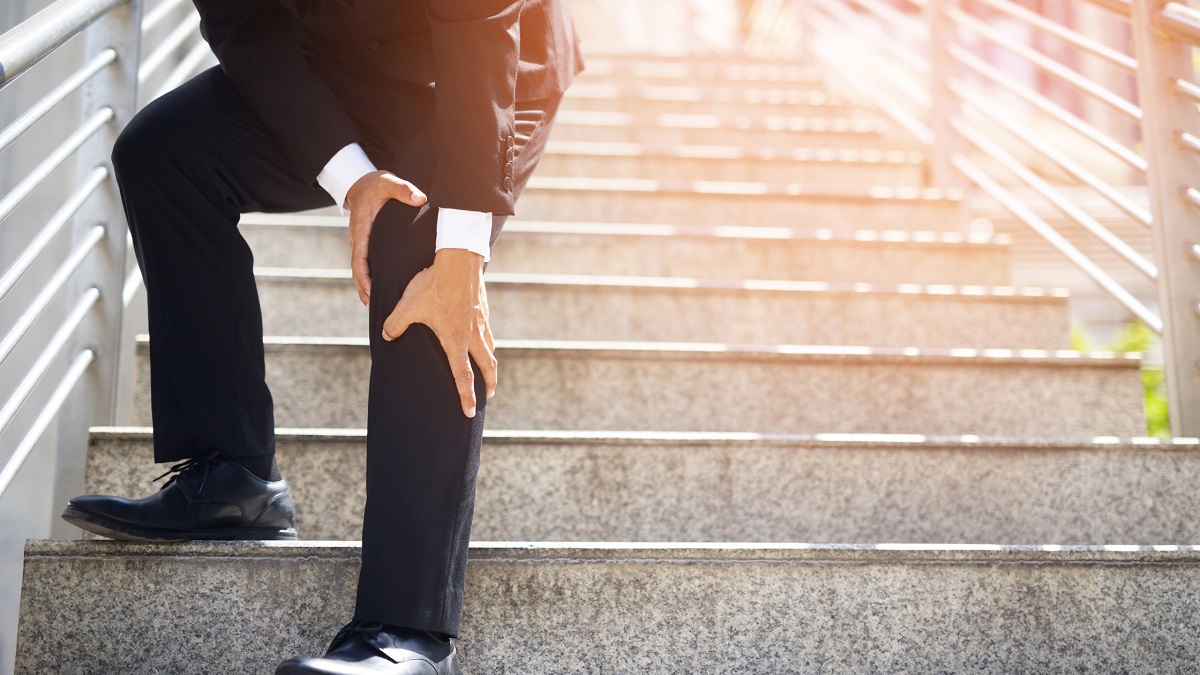

Articles
Knee Pain When Coming Down Stairs
Modified: December 7, 2023
Discover helpful articles on how to alleviate knee pain when coming down stairs. Find effective remedies, exercises, and expert tips to relieve discomfort and improve mobility.
(Many of the links in this article redirect to a specific reviewed product. Your purchase of these products through affiliate links helps to generate commission for Storables.com, at no extra cost. Learn more)
Introduction
Knee pain can be a common complaint, especially when descending stairs. Whether it’s a sharp, stabbing sensation or a dull ache, knee pain can make stairs feel like an insurmountable challenge. Understanding the causes, symptoms, and treatment options for knee pain when coming down stairs is crucial in finding relief and improving your mobility.
One of the primary reasons individuals experience knee pain when descending stairs is due to the increased load placed on the knee joint. When you descend, the forces exerted on your knee joint are multiplied, putting additional stress on the tissues and structures within the knee. This can lead to pain and discomfort, making it difficult to navigate stairs comfortably.
Several factors contribute to knee pain when coming down stairs, including underlying conditions, injuries, overuse, and biomechanical abnormalities. Identifying the specific cause of your knee pain is essential in developing an effective treatment plan and preventing further damage.
In this article, we will explore the common causes, symptoms, and treatment options for knee pain when descending stairs. We will also discuss preventive measures and exercises that can help alleviate knee pain and improve your overall knee health.
Key Takeaways:
- Understanding the causes, symptoms, and treatment options for knee pain when descending stairs is crucial for finding relief and improving overall knee health. Consult a healthcare professional for personalized guidance and care.
- Prevention tips, exercises, and stretches can help reduce the risk of knee pain when coming down stairs. Pay attention to your body, seek medical attention for severe or persistent symptoms, and take proactive steps to manage your condition.
Read more: Top Of Foot Pain When Walking Down Stairs
Causes of Knee Pain When Coming Down Stairs
Knee pain when coming down stairs can have various causes, ranging from acute injuries to chronic conditions. Understanding the underlying causes can help determine the appropriate treatment and management strategies. Here are some common causes of knee pain when descending stairs:
- Patellofemoral Pain Syndrome (PFPS): Also known as “runner’s knee,” PFPS is a common condition that causes pain around or behind the kneecap. It often occurs due to imbalances in the muscles surrounding the knee joint, leading to improper tracking of the kneecap during movement. Descending stairs can exacerbate the pain and discomfort associated with PFPS.
- Knee Osteoarthritis: Osteoarthritis is a degenerative joint disease that commonly affects the knees. It occurs when the protective cartilage between the bones breaks down, leading to pain, stiffness, and swelling. Descending stairs can increase the load on the affected knee joint, causing increased pain and difficulty.
- Meniscus Tears: The meniscus is a rubbery cartilage that cushions the knee joint. Tears in the meniscus can occur from sudden twisting or bending movements, causing pain, swelling, and difficulty in bending or straightening the knee. Descending stairs can aggravate the symptoms by putting additional stress on the injured meniscus.
- Patellar Tendonitis: Also known as “jumper’s knee,” patellar tendonitis is an overuse injury that affects the tendon connecting the kneecap to the shinbone. It often occurs due to repetitive jumping or running activities. Descending stairs can worsen the pain and inflammation associated with patellar tendonitis.
- Iliotibial (IT) Band Syndrome: The IT band is a thick band of tissue that runs along the outside of the thigh, from the hip to the shin. IT band syndrome occurs when the band becomes inflamed or tight, leading to pain on the outer side of the knee. The repetitive motion of descending stairs can aggravate the symptoms of IT band syndrome.
- Patellar Instability: Patellar instability refers to the abnormal movement of the kneecap, either partially or completely dislocating from its normal position. This can result from trauma or a congenital abnormality. Descending stairs can cause the patella to shift improperly, leading to pain and instability in the knee.
- Knee Bursitis: Bursae are small fluid-filled sacs that cushion the bones, tendons, and muscles around the joints. When a bursa becomes irritated or inflamed, it can cause knee bursitis, resulting in pain and swelling. Descending stairs can worsen the pain, as it increases the pressure on the knee joint and surrounding tissues.
These are just a few of the many potential causes of knee pain when coming down stairs. It is important to consult with a healthcare professional for an accurate diagnosis and customized treatment plan based on your specific condition.
Common Conditions Associated with Knee Pain When Coming Down Stairs
Knee pain when descending stairs can be indicative of various underlying conditions. Understanding these conditions can provide valuable insights into the source of your knee pain. Here are some common conditions associated with knee pain when coming down stairs:
- Patellofemoral Pain Syndrome (PFPS): This condition is characterized by pain in the kneecap area and is often aggravated by activities that involve bending or squatting, such as descending stairs. PFPS is typically caused by imbalances in the muscles around the knee joint or abnormalities in the alignment of the patella.
- Knee Osteoarthritis: Osteoarthritis is a degenerative joint disease that commonly affects the knees. It occurs when the protective cartilage between the bones wears down over time. Knee osteoarthritis can cause pain, stiffness, and swelling, making it difficult to navigate stairs comfortably.
- Meniscus Tears: The meniscus is a piece of cartilage that provides cushioning between the bones of the knee joint. Tears in the meniscus can occur due to sudden twisting or direct impact on the knee. This can cause pain, swelling, and limited range of motion when going down stairs.
- Patellar Tendonitis: Also known as “jumper’s knee,” patellar tendonitis refers to the inflammation of the tendon that connects the patella (kneecap) to the shinbone. It typically occurs due to overuse or repetitive strain on the tendon. Descending stairs can worsen the pain and discomfort associated with this condition.
- Iliotibial (IT) Band Syndrome: IT band syndrome is a condition in which the iliotibial band, a thick band of tissue that runs along the outside of the thigh, becomes irritated and inflamed. It is often caused by repetitive friction between the band and the knee joint. Descending stairs can exacerbate the pain and tightness experienced in the affected knee.
- Patellar Instability: This refers to the abnormal movement of the patella, or kneecap, which may partially or completely dislocate from its normal position. It can be caused by factors such as genetic predisposition, trauma, or muscle imbalances. Descending stairs can trigger episodes of pain or instability in individuals with patellar instability.
- Knee Bursitis: Bursae are small, fluid-filled sacs that act as cushions between bones, tendons, and muscles around the joints. When a bursa becomes inflamed or irritated, it leads to knee bursitis. Descending stairs can aggravate the pain and swelling in the knee joint, as it increases pressure on the bursa.
These are just a few examples of the common conditions associated with knee pain when coming down stairs. It’s important to consult with a healthcare professional for an accurate diagnosis and appropriate treatment plan tailored to your specific condition.
Symptoms of Knee Pain When Coming Down Stairs
Knee pain when descending stairs can manifest in various ways, depending on the underlying cause and severity of the condition. Recognizing the symptoms associated with knee pain can help in identifying the underlying issue and seeking appropriate treatment. Here are common symptoms of knee pain when coming down stairs:
- Pain: One of the most prevalent symptoms of knee pain when descending stairs is discomfort or pain in the knee joint. The pain can range from a dull ache to sharp, stabbing sensations, and may be localized to a specific area or spread throughout the knee.
- Swelling: Inflammation and swelling around the knee joint are common symptoms of knee pain. The affected area may appear visibly swollen or feel tight and tender to the touch. Swelling can hinder movement and make navigating stairs challenging.
- Stiffness: People experiencing knee pain when coming down stairs may often experience stiffness in the knee joint. This can make it difficult to bend or straighten the knee fully, further complicating the task of going down stairs.
- Grating or popping sensations: Some individuals may notice grating or popping sensations when moving their knees, especially when going down stairs. These sensations can indicate underlying issues such as cartilage damage or loose fragments in the knee joint.
- Weakness: Weakness in the knee joint is another symptom that may accompany knee pain when descending stairs. This can make it feel unstable or give way, making it challenging to safely navigate stairs.
- Limited range of motion: Knee pain can lead to a reduced range of motion, making it difficult to fully extend or flex the knee joint. This limitation can be particularly noticeable when descending stairs, as the knee is required to bend and straighten with every step.
- Tenderness to touch: The knee joint may be tender to the touch, especially in the areas surrounding the affected knee. Pressing or applying pressure to these areas may elicit pain or discomfort.
- Difficulty weight-bearing: Some individuals may find it challenging to put weight on the affected knee, leading to difficulty in descending stairs. This can be due to pain, instability, or a combination of both.
It is important to note that the symptoms may vary depending on the underlying cause and individual factors. If you are experiencing knee pain when coming down stairs, it is advisable to consult a healthcare professional for a proper diagnosis and personalized treatment plan.
Diagnosis of Knee Pain When Coming Down Stairs
When experiencing knee pain when descending stairs, a proper diagnosis is essential to determine the underlying cause and develop an effective treatment plan. Diagnosing the source of knee pain typically involves a combination of methods, including a thorough medical history review, physical examination, and imaging tests. Here are some common diagnostic procedures for knee pain when coming down stairs:
- Medical History Review: A healthcare professional will begin by discussing your symptoms and medical history. They may ask questions about the duration, location, and intensity of your knee pain. They will also inquire about any previous injuries or medical conditions that could be contributing to your symptoms.
- Physical Examination: A physical examination may involve evaluating the range of motion of your knee joint, assessing your gait and posture, and checking for signs of inflammation, instability, or tenderness. The healthcare professional may also perform specific maneuvers to elicit pain or assess the stability of the knee.
- Imaging Tests: Depending on the findings from the medical history and physical examination, imaging tests may be recommended. X-rays can help identify fractures, bone abnormalities, or signs of osteoarthritis. MRI scans provide more detailed images of the soft tissues, such as ligaments, tendons, and cartilage, which can help detect issues like meniscus tears or ligament damage. Ultrasound may also be used to visualize certain anatomical structures and assess the presence of inflammation or fluid accumulation.
- Other Specialized Tests: In some cases, additional tests may be necessary to further evaluate specific conditions. For example, if patellar instability or alignment issues are suspected, a specialized imaging technique called a CT scan may be ordered. Electromyography (EMG) or nerve conduction studies may be performed if nerve-related issues are suspected as a potential cause of knee pain.
- Referral to a Specialist: Depending on the findings from the initial evaluation, your healthcare provider may refer you to a specialist, such as an orthopedic surgeon or a sports medicine physician, for further evaluation and treatment if deemed necessary.
It is important to work closely with a healthcare professional throughout the diagnostic process to ensure an accurate diagnosis and appropriate treatment plan for your specific condition. They will consider your symptoms, medical history, and the results of any tests or examinations to guide the most effective treatment approach.
Ensure proper footwear with good support. Strengthen quadriceps and hamstrings with exercises like squats and lunges. Use handrails for support when coming down stairs. If pain persists, consult a healthcare professional.
Read more: Knee Clicks When Going Up Stairs
Treatment Options for Knee Pain When Coming Down Stairs
Treating knee pain when descending stairs involves addressing the underlying cause of the pain and implementing appropriate management strategies. The specific treatment options can vary based on the individual and the severity of the condition. Here are some common treatment approaches for knee pain when coming down stairs:
- Rest and Activity Modification: In many cases, giving the knee joint adequate rest and modifying activities that aggravate the pain can help alleviate symptoms. This may involve temporarily avoiding activities that require excessive stair usage or reducing overall activity levels to allow the knee to heal.
- Pain Management: Nonsteroidal anti-inflammatory drugs (NSAIDs) such as ibuprofen or acetaminophen can help reduce pain and inflammation associated with knee pain. Topical pain relievers or corticosteroid injections may also be prescribed by a healthcare professional for more targeted pain relief.
- Physical Therapy: A physical therapist can develop a customized exercise program to strengthen the muscles around the knee, improve flexibility, and correct any imbalances or abnormal movement patterns. Physical therapy may also include techniques such as manual therapy, heat or ice therapy, or electrical stimulation to manage pain and enhance healing.
- Bracing or Orthotics: Braces or orthotic devices may be recommended to provide stability, support, and alignment to the knee joint. These devices can help reduce pain and improve joint function during stair descent.
- Biomechanical Improvements: Addressing biomechanical abnormalities, such as muscle imbalances or altered movement patterns, can help alleviate knee pain. This may involve activities such as gait training, balance exercises, or strengthening weak muscles while stretching tight ones.
- Surgical Intervention: In some cases, conservative treatments may not provide sufficient relief, and surgery may be necessary. Surgical options depend on the specific underlying cause of the knee pain and may include procedures such as arthroscopy, meniscus repair, ligament reconstruction, or knee replacement.
- Alternative Therapies: Complementary or alternative therapies, such as acupuncture, chiropractic care, or herbal supplements, may be explored to manage knee pain. However, it is important to consult with a healthcare professional before trying any alternative treatments to ensure their safety and effectiveness.
It is crucial to consult with a healthcare professional to determine the most appropriate treatment options for your specific condition. They will consider factors such as the underlying cause, your overall health, and your preferences to provide the most effective and personalized treatment plan for alleviating knee pain when coming down stairs.
Prevention Tips for Knee Pain When Coming Down Stairs
Preventing knee pain when descending stairs involves implementing certain measures to reduce stress on the knee joint and maintain overall knee health. By incorporating these prevention tips into your daily routine, you can minimize the risk of developing knee pain. Here are some practical strategies to consider:
- Maintain a Healthy Weight: Excess weight puts additional stress on the knee joint, which can contribute to knee pain. By achieving and maintaining a healthy weight through proper nutrition and regular exercise, you can reduce the load on your knees and decrease the likelihood of developing pain when going down stairs.
- Strengthen the Muscles Around the Knee: Engage in regular strength training exercises that focus on building the muscles around the knee, including the quadriceps, hamstrings, and calf muscles. Strong and balanced muscles provide stability to the knee joint and reduce the risk of injury and pain when descending stairs.
- Warm-Up and Stretch: Prior to engaging in physical activities or exercise that involve stair descending, it is essential to warm up with light cardiovascular exercises and perform dynamic stretches for the lower body. This prepares the muscles and joints for increased activity, reducing the likelihood of knee pain.
- Use Proper Stair Descent Technique: Pay attention to your form and technique when descending stairs. Focus on distributing your weight evenly, keeping your steps controlled and balanced. Avoid rushing or taking large steps, as this can increase stress on the knees.
- Wear Proper Footwear: Ensure that you wear comfortable and supportive footwear that provides adequate cushioning and stability. Properly fitting shoes with good arch support can help absorb shock and reduce pressure on the knees when coming down stairs.
- Avoid Excessive Impact: Minimize activities that involve high-impact movements, such as jumping or running down stairs, as these can increase stress on the knees and lead to knee pain. Opt for low-impact exercises like swimming or cycling to maintain cardiovascular fitness without excessive strain on the knees.
- Listen to Your Body: Pay attention to any discomfort or pain in your knees when coming down stairs. If you experience persistent or worsening pain, take a break from activities that exacerbate the pain and consult with a healthcare professional for an evaluation and appropriate treatment.
- Stay Active but Diversify Your Exercises: Engage in a variety of exercises and activities to avoid overloading the knees with repetitive movements. Cross-training with low-impact exercises, such as yoga or pilates, can help strengthen and support the knees while reducing the risk of overuse injuries.
- Consider Physical Therapy: If you have a history of knee pain or are at a higher risk due to certain factors, such as previous injuries or specific medical conditions, consulting with a physical therapist can be beneficial. They can provide guidance on exercises, proper movement mechanics, and strategies for preventing knee pain during stair descent.
By incorporating these prevention tips into your lifestyle, you can reduce the likelihood of developing knee pain when coming down stairs and maintain optimal knee health. If you’re already experiencing knee pain, consult with a healthcare professional for an accurate diagnosis and personalized recommendations.
Exercises and Stretches for Knee Pain When Coming Down Stairs
Engaging in specific exercises and stretches can help strengthen the muscles surrounding the knee, improve flexibility, and alleviate knee pain when descending stairs. It’s important to note that these exercises should be done under the guidance of a healthcare professional or a qualified exercise specialist. Here are some exercises and stretches that can be beneficial:
- Straight Leg Raises: This exercise targets the quadriceps, the muscles on the front of the thigh. Lie on your back with one leg straight and the other bent. Slowly lift the straight leg off the ground, keeping it straight and engaging the quadriceps. Lower the leg back down and repeat for 10-15 repetitions on each leg.
- Wall Squats: Stand with your back against a wall and feet shoulder-width apart. Slowly slide your back down the wall, bending your knees as if you’re sitting back into a chair. Aim to lower yourself until your thighs are parallel to the ground. Hold this position for a few seconds, then push through your heels to return to the starting position. Start with 5-10 repetitions and gradually increase as tolerated.
- Hamstring Curls: Using an exercise ball or a resistance band, lie on your stomach with your legs straight. Bend one knee and bring your heel toward your buttocks, contracting the hamstring muscle. Slowly lower the leg back down and repeat on the other leg. Perform 10-15 repetitions on each leg.
- Calf Raises: Stand with your feet shoulder-width apart. Rise up onto your toes, lifting your heels off the ground. Hold this position for a few seconds, then lower your heels back down. Perform 10-15 repetitions, gradually increasing as your strength improves.
- Quad Stretch: Stand near a wall or use a stable object for balance. Bend one knee and reach back, holding onto your ankle or foot with your hand. Gently pull your heel towards your buttocks, feeling a stretch in the front of your thigh. Hold the stretch for 20-30 seconds, then repeat on the other leg.
- Hamstring Stretch: Sit on the edge of a chair or bench with one leg straight in front of you and the other foot flat on the ground. Lean forward from the hips, keeping your back straight, until you feel a gentle stretch in the back of your thigh. Hold the stretch for 20-30 seconds, then switch legs and repeat.
- Quad Foam Rolling: Using a foam roller, position yourself face down with the foam roller under your thighs. Slowly roll forward and backward, applying pressure to any tight or tender spots along your quadriceps. Spend about 1-2 minutes on each leg.
- IT Band Stretch: Stand with your legs crossed, placing the side of your foot against a wall or sturdy surface. Lean your upper body away from the wall until you feel a stretch along the side of your thigh. Hold the stretch for 20-30 seconds, then repeat on the other side.
Remember to start with gentle movements and progress gradually, listening to your body’s response. If you experience any pain or discomfort, discontinue the exercise and consult with a healthcare professional. Incorporating these exercises and stretches into your routine can help improve knee strength, flexibility, and alleviate knee pain when coming down stairs.
When to Seek Medical Attention for Knee Pain When Coming Down Stairs
Knee pain when descending stairs is a common issue that can often be managed with self-care measures and conservative treatment. However, in certain cases, it is important to seek medical attention for an accurate diagnosis and appropriate treatment. Here are some indications that you should consult with a healthcare professional for your knee pain when coming down stairs:
- Severe Pain: If you experience severe, sharp, or debilitating pain in your knee when descending stairs, it is essential to seek medical attention. Severe pain can indicate a significant injury or underlying condition that requires prompt evaluation and treatment.
- Sudden Onset of Symptoms: If you experience a sudden onset of knee pain while descending stairs without any apparent cause or injury, it is advisable to consult a healthcare professional. This sudden onset may indicate a tear, fracture, or other acute conditions that warrant medical evaluation.
- Inability to Bear Weight: If you cannot bear weight on your affected knee or have difficulty walking or standing due to the pain when descending stairs, it is important to seek medical attention. This may suggest a more severe injury that requires immediate medical evaluation.
- Swelling or Redness: If your knee becomes visibly swollen, red, or warm to the touch, it could indicate an inflammatory response or an infection. In such cases, it is crucial to consult a healthcare professional for proper evaluation and treatment.
- Limited Range of Motion: If you experience significant limitations in your ability to bend or straighten your knee, it is important to seek medical attention. This may suggest a structural issue or joint dysfunction that requires further evaluation and appropriate management.
- Persistent Symptoms: If your knee pain persists for more than a few days or worsens despite conservative measures such as rest, ice, and over-the-counter pain medications, it is advisable to consult with a healthcare professional. Persistent symptoms may indicate an underlying condition that requires specialized treatment.
- History of Knee Problems: If you have a history of previous knee injuries, surgeries, or underlying medical conditions affecting your knee joint, it is recommended to consult with a healthcare professional for any new or worsening symptoms, as they may require specific management.
It’s important to remember that every individual and situation is unique. If you are unsure whether or not to seek medical attention for your knee pain when descending stairs, it is always best to err on the side of caution and consult with a healthcare professional who can provide a proper evaluation and guide you towards the most appropriate treatment options.
Read more: Hip Pain When Going Up Stairs
Conclusion
Knee pain when coming down stairs can be a frustrating and limiting condition that affects many individuals. Whether it is due to underlying conditions, injuries, or overuse, understanding the causes, symptoms, and treatment options is crucial in finding relief and improving your overall knee health.
In this article, we explored the various causes of knee pain when descending stairs, including conditions such as patellofemoral pain syndrome, knee osteoarthritis, meniscus tears, and patellar tendonitis, among others. We also discussed common symptoms that individuals may experience, such as pain, swelling, stiffness, and weakness, and the diagnostic process involved in identifying the underlying cause of knee pain.
Treatment options for knee pain when descending stairs include rest, activity modification, pain management, physical therapy, bracing, and in some cases, surgical intervention. Additionally, we provided prevention tips to help reduce the risk of developing knee pain, including maintaining a healthy weight, strengthening the muscles around the knee, using proper form when descending stairs, and wearing appropriate footwear.
Furthermore, incorporating specific exercises and stretches tailored to the knee joint can be beneficial in improving strength, flexibility, and reducing knee pain associated with stair descent.
However, it’s essential to remember that if knee pain becomes severe, persists, or is accompanied by other concerning symptoms, it is recommended to seek medical attention to receive a proper diagnosis and appropriate treatment.
By understanding the causes, symptoms, and treatment options for knee pain when coming down stairs, individuals can take proactive steps to manage their condition, improve mobility, and enhance their overall quality of life. Remember to consult with a healthcare professional for personalized guidance and care to address your specific situation.
Frequently Asked Questions about Knee Pain When Coming Down Stairs
Was this page helpful?
At Storables.com, we guarantee accurate and reliable information. Our content, validated by Expert Board Contributors, is crafted following stringent Editorial Policies. We're committed to providing you with well-researched, expert-backed insights for all your informational needs.
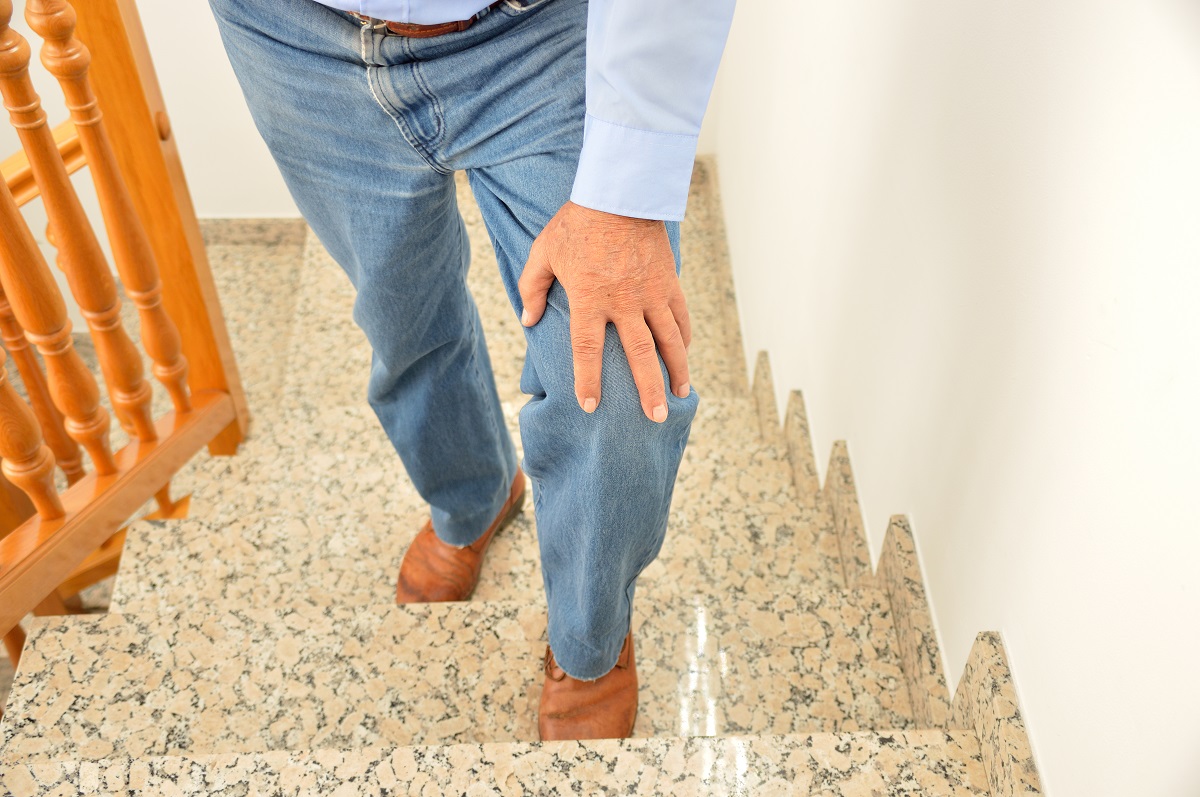
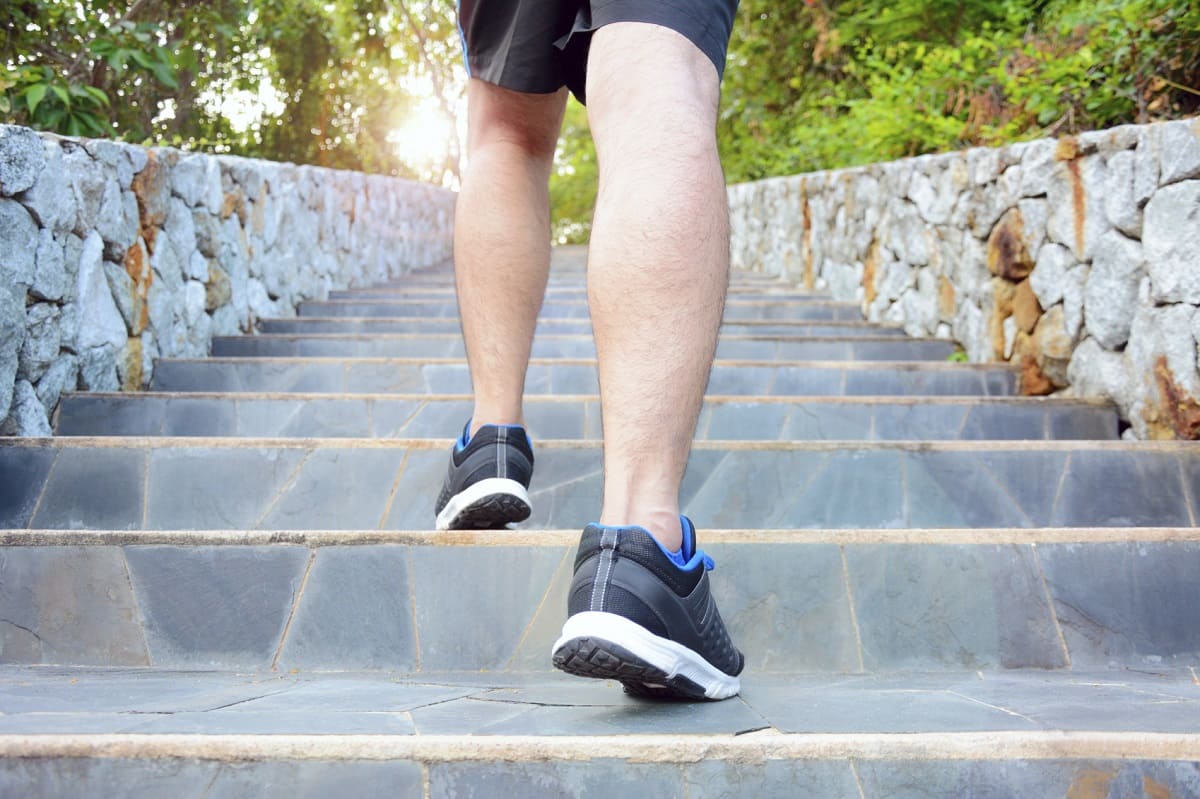
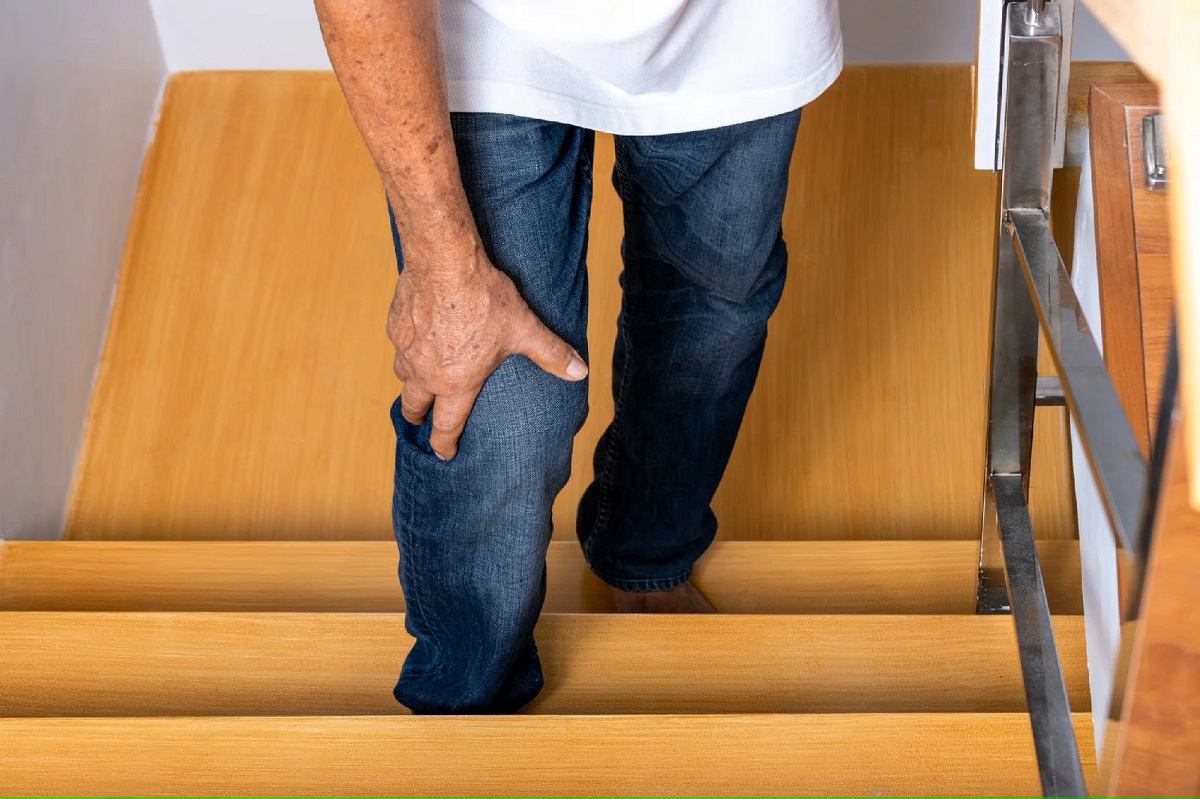
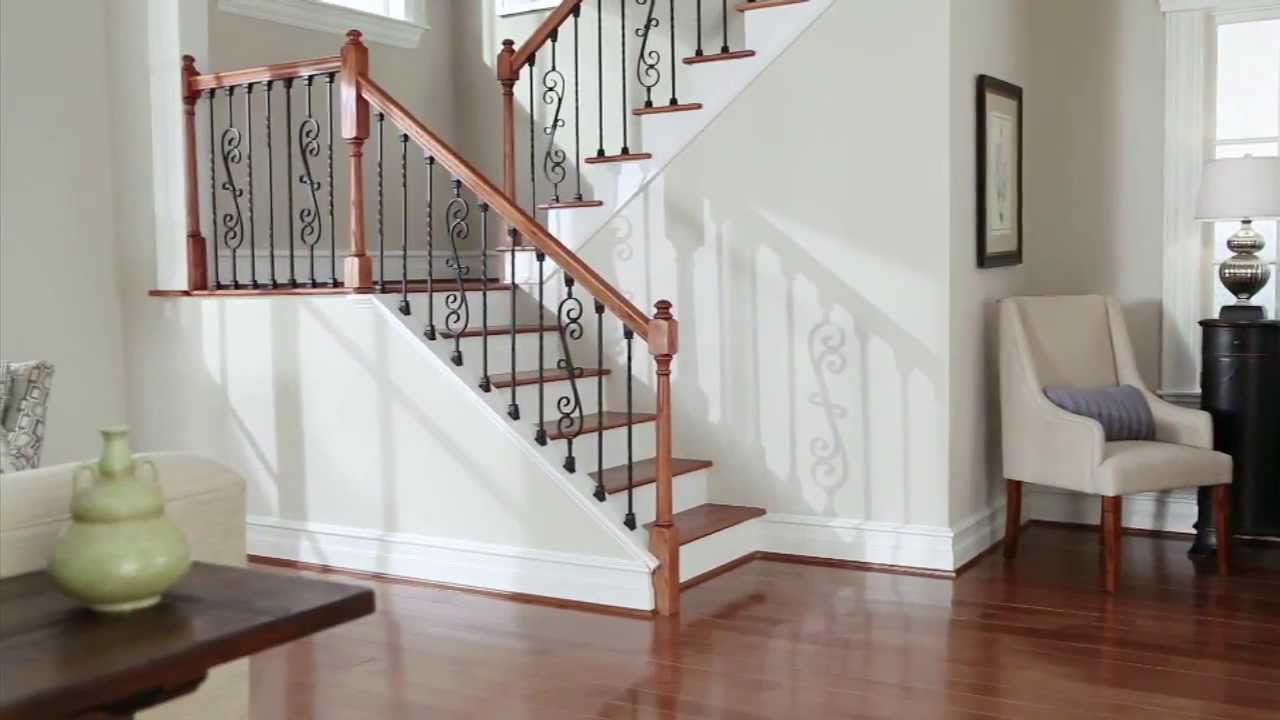
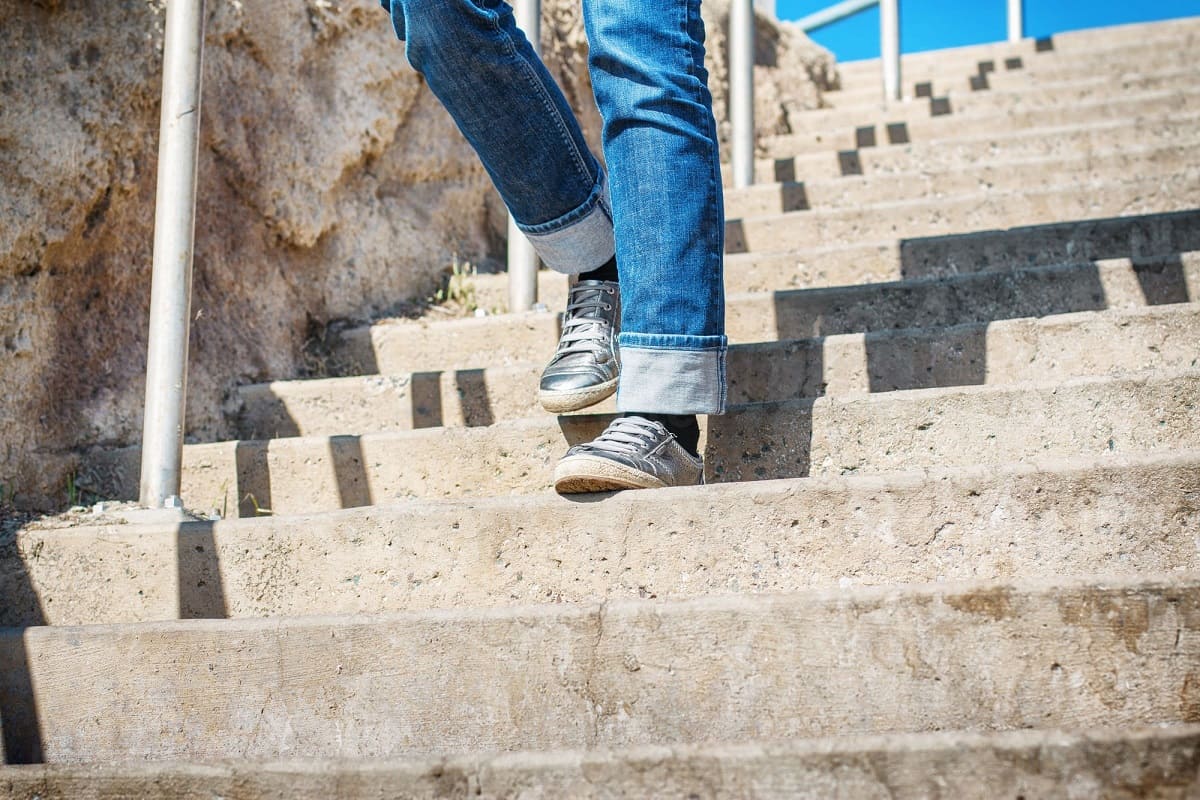
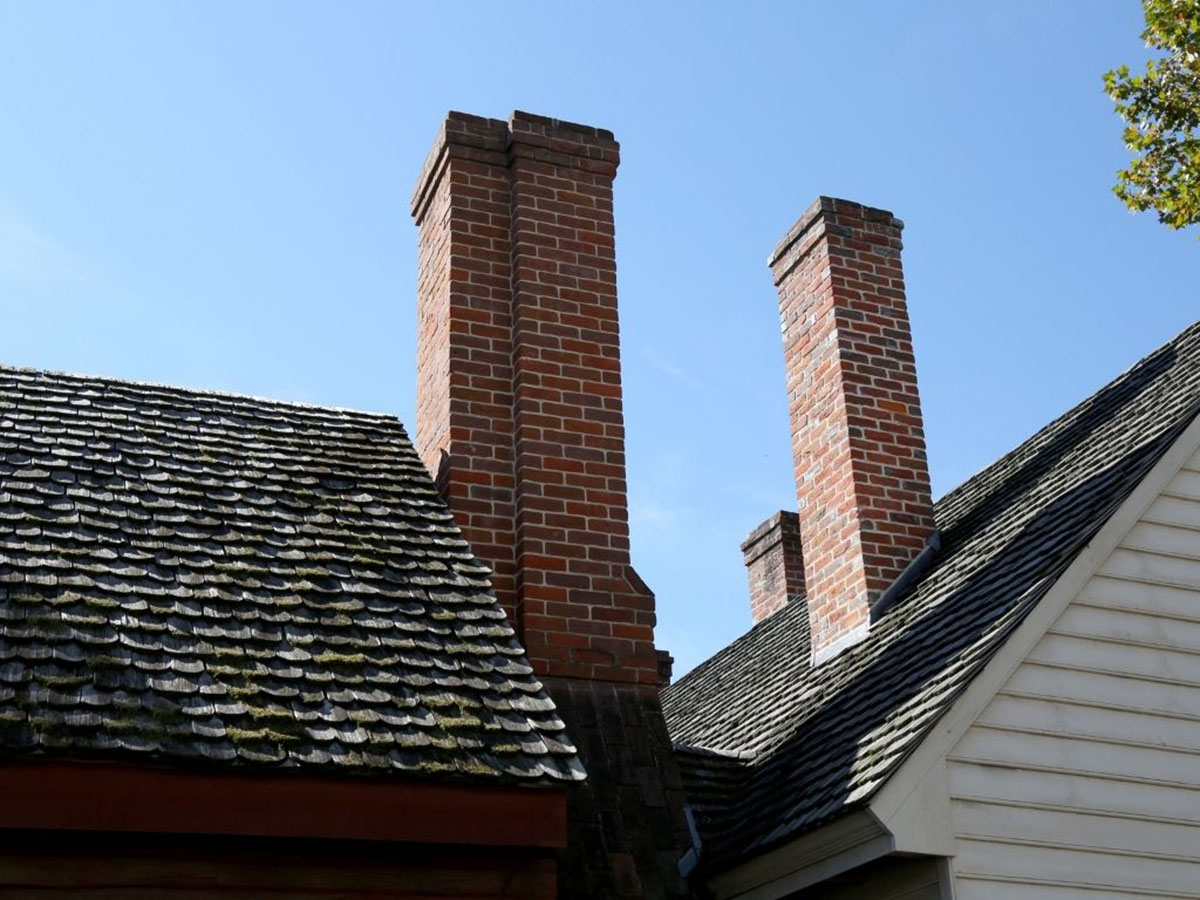
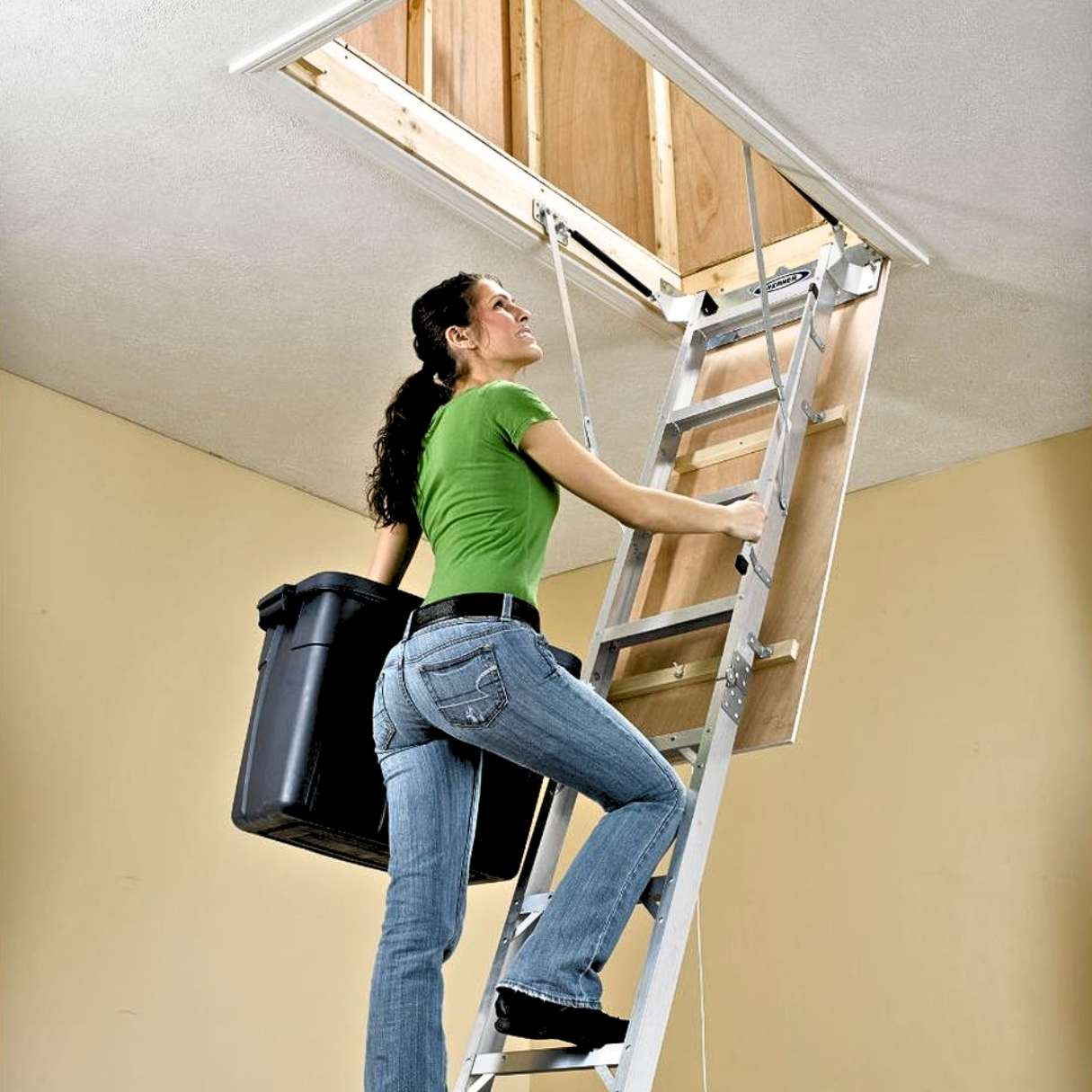
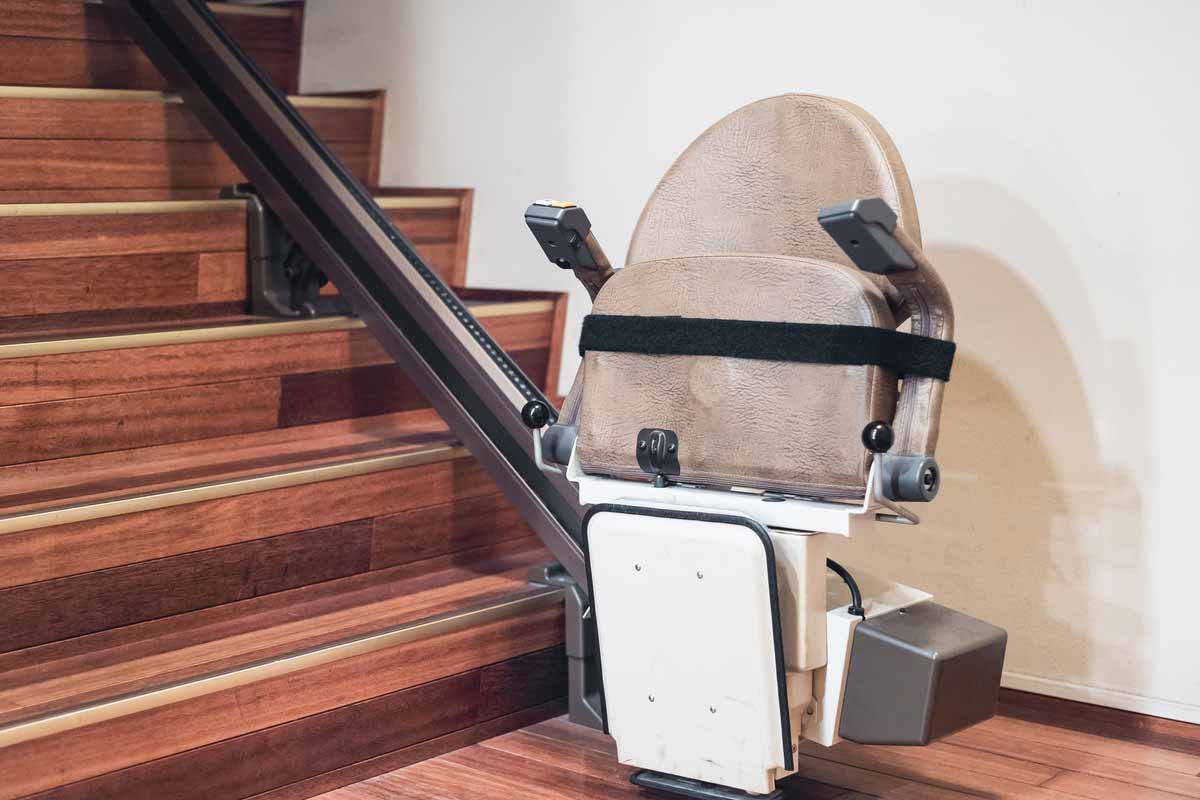
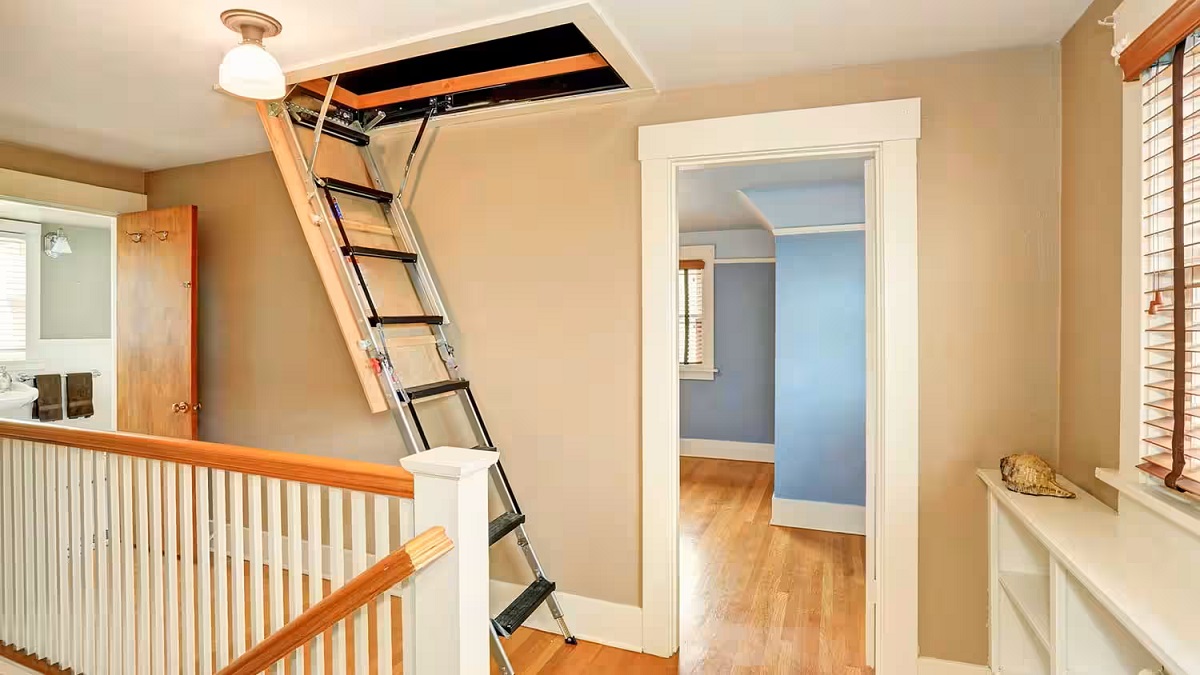
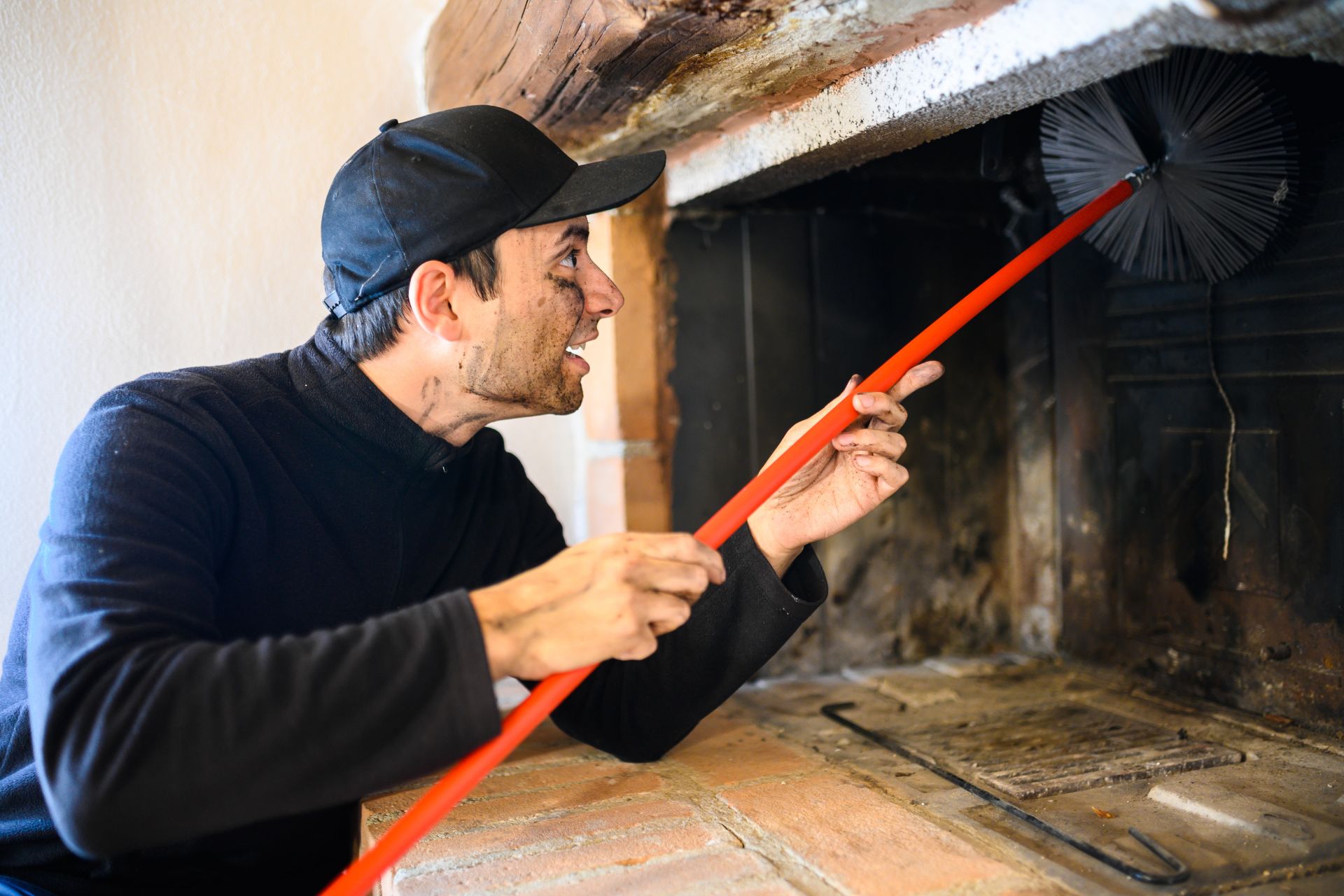
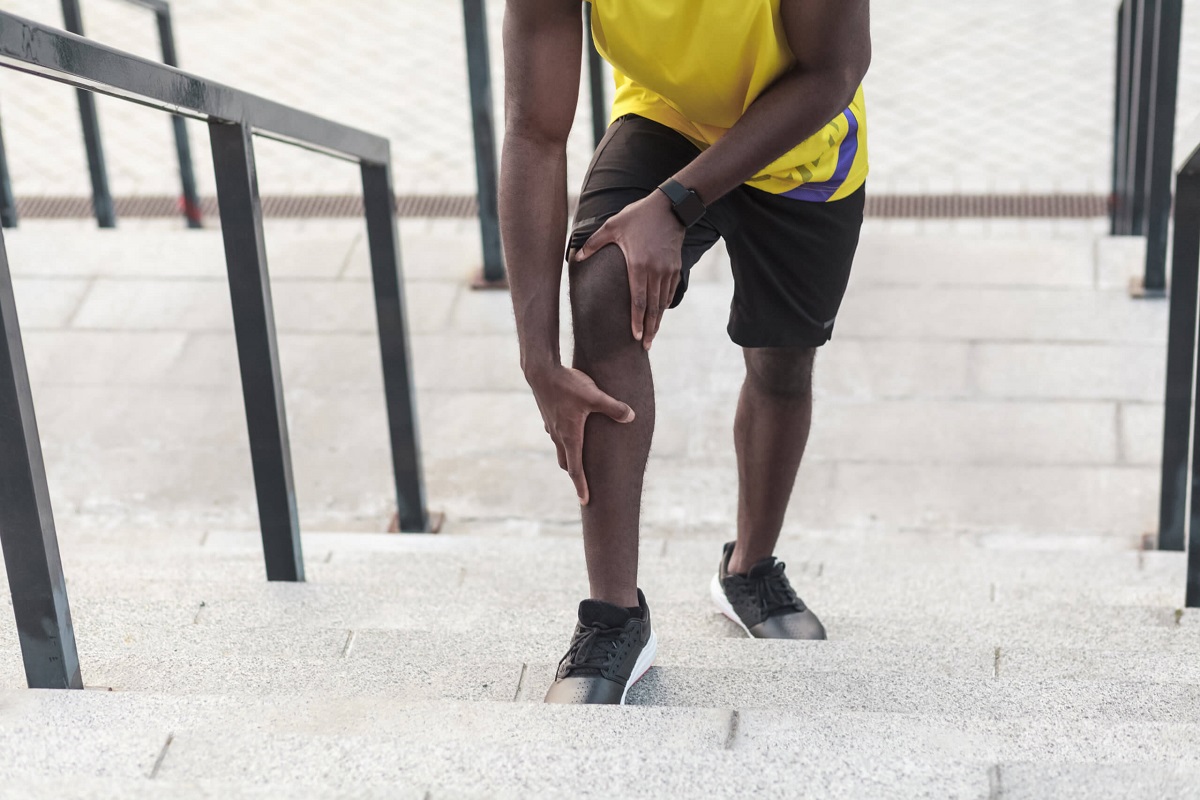
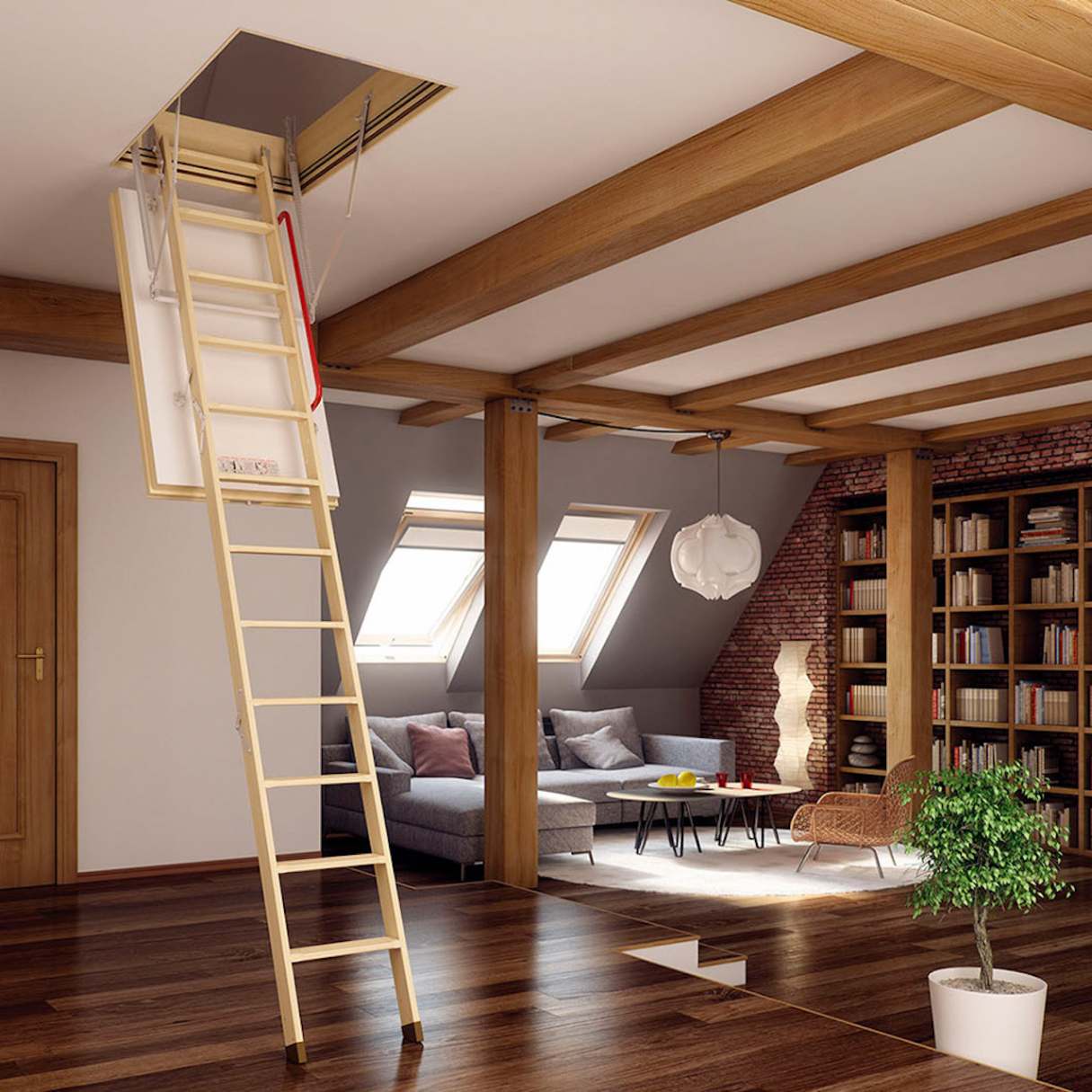
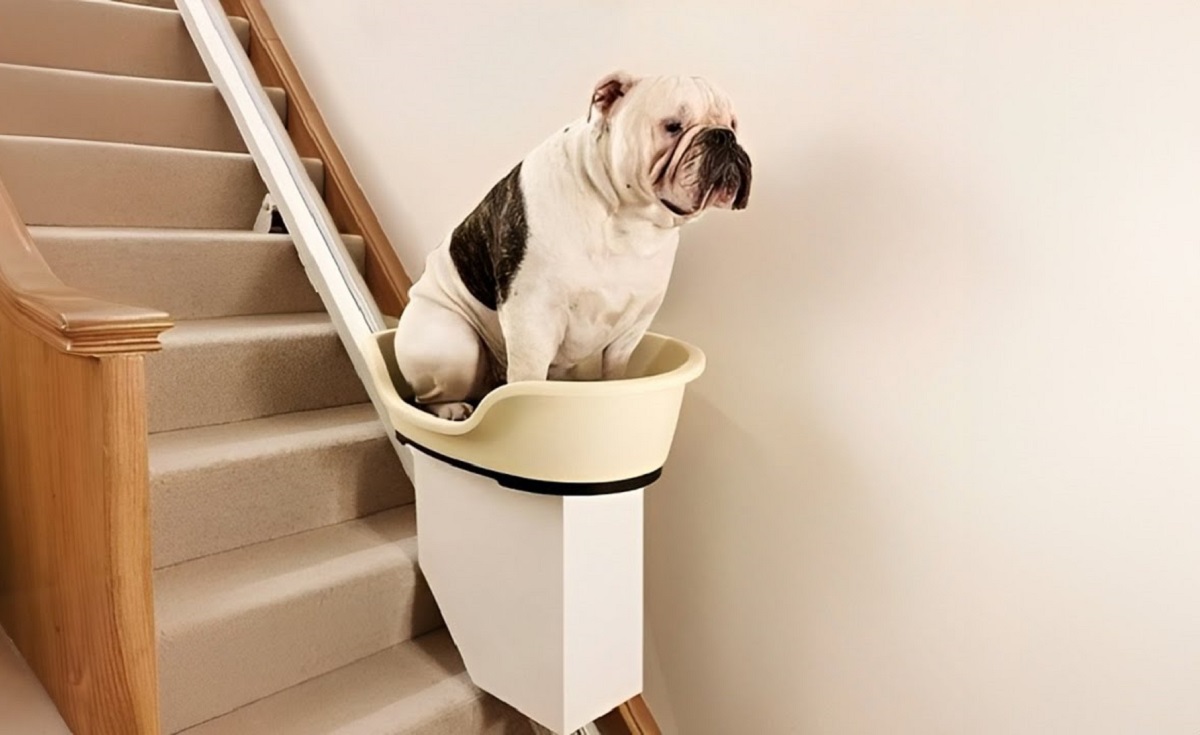

0 thoughts on “Knee Pain When Coming Down Stairs”